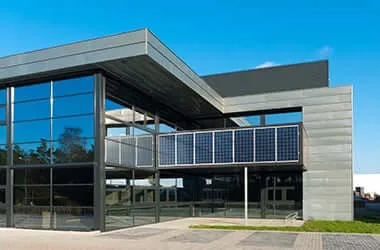Understanding the Significance of Half Cell Technology in Solar Panels
Understanding Half-Cell Solar Panels An Overview
The solar energy industry has seen remarkable advancements over the past few decades, leading to the development of various technologies aimed at improving the efficiency and performance of solar panels. One such innovation is the half-cell solar panel, a design that has gained significant attention for its enhanced productivity and durability. This article explores the meaning, benefits, and applications of half-cell solar panels, shedding light on why they are becoming a preferred choice for both residential and commercial installations.
What Are Half-Cell Solar Panels?
Half-cell solar panels are a type of photovoltaic panel that uses half-sized solar cells compared to conventional full-sized cells. Typically, a standard solar panel comprises 60 to 72 cells; however, half-cell panels are constructed using 120 to 144 smaller cells. This design reduces shading losses, as the smaller cells allow for a more efficient current flow even if a part of the panel is shaded. By dividing the solar cells, the panels maintain higher energy output levels under various environmental conditions.
Benefits of Half-Cell Solar Panels
1. Improved Efficiency One of the significant advantages of half-cell solar panels is their higher efficiency. The smaller cells minimize the resistance in the circuit, resulting in better energy production, especially in low-light conditions. According to various studies, half-cell panels can generate up to 10% more power than traditional panels under similar conditions.
2. Enhanced Performance in Partial Shade In real-world scenarios, it's not uncommon for solar panels to face shading from trees, buildings, or other obstructions. The half-cell design mitigates the impact of partial shading, allowing the panel to continue operating efficiently. This means that homeowners or businesses with installations in shaded areas can still benefit from reliable energy production.
half cell solar panel meaning

3. Better Temperature Coefficient Half-cell solar panels have a lower temperature coefficient compared to regular panels. This attribute means that as temperatures rise, the drop in efficiency is less pronounced. Consequently, half-cell panels maintain optimal performance in hot weather, addressing a common challenge faced by standard solar panels.
4. Increased Durability The construction of half-cell panels often includes a more robust design, making them less susceptible to potential cracking and damage. Their ability to withstand stress and environmental factors contributes to a longer lifespan, which is essential for maximizing return on investment in solar energy systems.
5. Aesthetic Appeal Half-cell solar panels often come in sleek, compact designs that appeal to homeowners seeking a modern aesthetic. This is a significant advantage in residential installations, where customers may prefer an appealing look alongside efficiency.
Applications and Trends
Half-cell solar panels are suitable for various installations, ranging from residential rooftops to large-scale commercial solar farms. Their versatility and efficiency make them an ideal choice for urban environments, where space is often limited, and shading can occur frequently. The growing trend of renewable energy adoption has encouraged manufacturers to invest in half-cell technology, thereby increasing its availability and decreasing costs.
Conclusion
In conclusion, half-cell solar panels represent a significant step forward in solar technology, offering numerous advantages over traditional panels. With their improved efficiency, better performance in partial shade, enhanced durability, and aesthetic appeal, they are becoming a favored option for many consumers and businesses. As the global shift toward sustainable energy continues to gain momentum, half-cell solar panels will likely play an integral role in meeting energy needs while contributing to environmental conservation. Whether for residential or commercial use, investing in half-cell solar technology can provide significant long-term benefits, making it a wise choice for those looking to harness the power of the sun.
-
Unlocking Energy Freedom with the Off Grid Solar InverterNewsJun.06,2025
-
Unlock More Solar Power with a High-Efficiency Bifacial Solar PanelNewsJun.06,2025
-
Power Your Future with High-Efficiency Monocrystalline Solar PanelsNewsJun.06,2025
-
Next-Gen Solar Power Starts with Micro Solar InvertersNewsJun.06,2025
-
Harnessing Peak Efficiency with the On Grid Solar InverterNewsJun.06,2025
-
Discover Unmatched Efficiency with the Latest String Solar InverterNewsJun.06,2025







